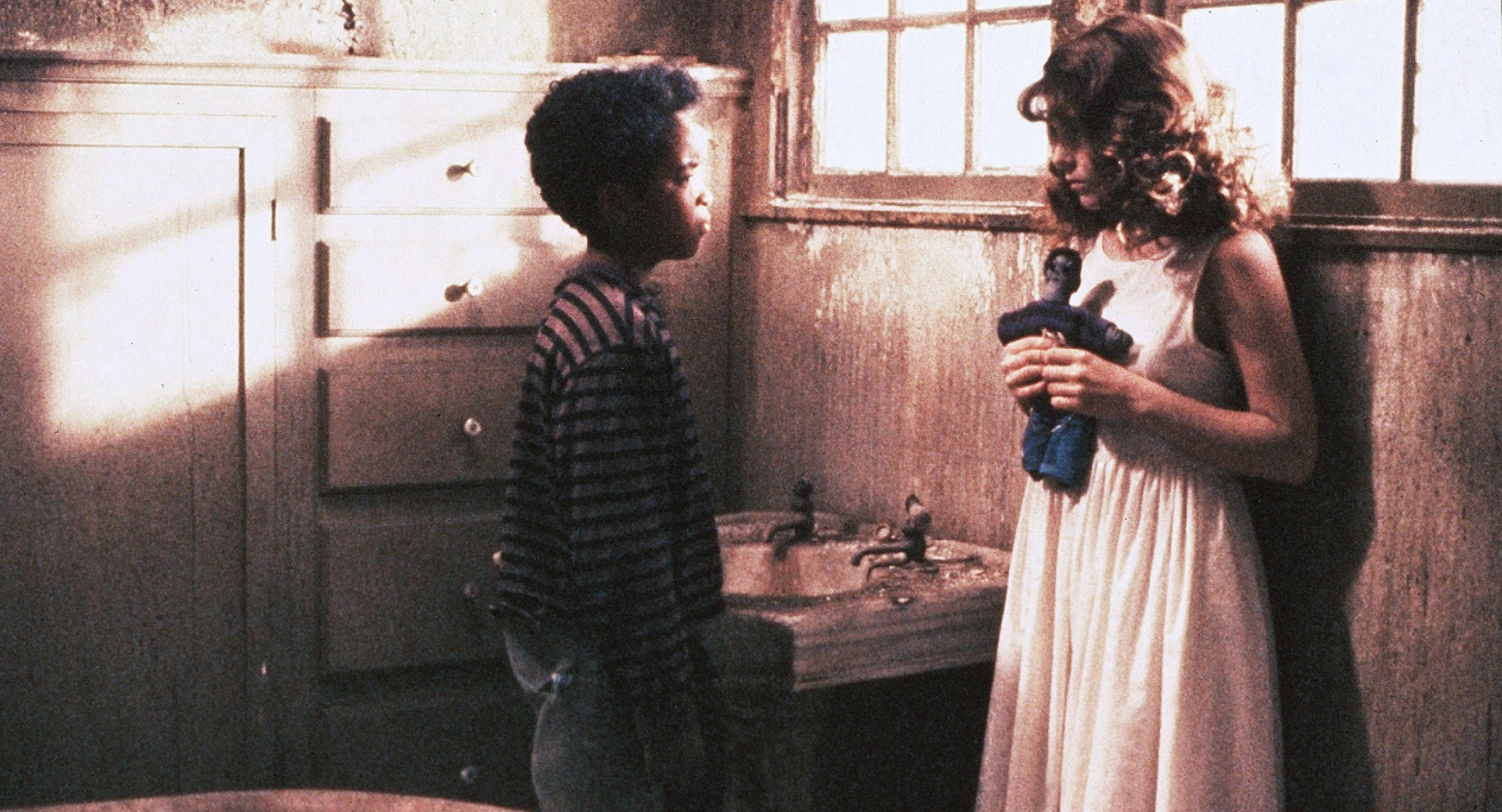When young Poindexter “Fool” Williams breaks into the creepy, immense old home of his family’s greedy and uncaring landlords, he uncovers a disturbing scenario underneath the stairs.
The People Under the Stairs – Film Review
Published September 24, 2023

The film’s plot revolves around a young boy named Fool (Brandon Adams), who lives in a poverty-stricken neighborhood with his family. Fool becomes embroiled in a horrifying and surreal nightmare when he breaks into the home of the sinister Robesons, played by Everett McGill and Wendy Robie. The Robesons, who seem to be the epitome of suburban normalcy, hide a gruesome secret in their labyrinthine home: a group of feral, mutilated children imprisoned beneath their stairs.
The narrative starts with a promising premise but tends to become increasingly convoluted as it unfolds. While the initial setup is intriguing, the film’s plot takes some implausible and over-the-top twists that may leave viewers scratching their heads. Some elements of the story, such as the bizarre and somewhat comedic behavior of the Robesons, may make it challenging to fully immerse oneself in the horror aspect of the film. However, the film does manage to maintain a level of tension throughout, making it engaging on a visceral level.
One of the film’s strong suits is its colorful cast of characters. Brandon Adams delivers a commendable performance as Fool, the resourceful and courageous protagonist. He manages to elicit empathy from the audience, which is crucial for a horror film. Ving Rhames also shines as Fool’s older brother, providing a compelling dynamic between the siblings.
The standout performances, however, come from Everett McGill and Wendy Robie as the demented Robeson couple. Their portrayal of the deranged homeowners is equal parts chilling and darkly comedic. The Robesons are the driving force behind the film’s horror, and McGill and Robie’s over-the-top performances, while occasionally bordering on campy, are undeniably memorable.
Wes Craven uses The People Under the Stairs to explore themes of class struggle, inequality, and the abuse of power. The stark contrast between the oppressed, impoverished neighborhood and the opulent, seemingly idyllic Robeson house serves as a metaphor for the broader societal issues at play. The film effectively portrays the Robesons as the embodiment of privilege and greed, exploiting the vulnerable for their own gain.
While the social commentary is compelling, it occasionally veers into heavy-handed territory, with characters explicitly discussing the film’s themes. This lack of subtlety can diminish the impact of the message, as the film’s allegorical elements could have been conveyed with greater nuance.
Wes Craven is known for his ability to create atmospheric and visually striking horror films, and The People Under the Stairs is no exception. The Robeson house is a labyrinthine nightmare, with its maze-like layout, hidden chambers, and grotesque decorations. Craven uses the house’s claustrophobic and chaotic design to great effect, generating a sense of disorientation and dread.
However, the film’s visual style is not without its shortcomings. Some of the practical effects and makeup, particularly in the portrayal of the imprisoned children, may come across as dated and less convincing to modern audiences. While the film relies on its grimy and unsettling visuals to create tension, it occasionally slips into absurdity, which may undermine the horror for some viewers.
The pacing of The People Under the Stairs is somewhat uneven. The film’s first act builds suspense effectively, drawing viewers into Fool’s world and the mystery surrounding the Robesons. However, as the plot becomes more convoluted, the pacing falters, and the film occasionally loses its grip on the audience’s attention.
The third act, in particular, takes a rapid descent into chaos, with a barrage of action, violence, and revelations that may leave viewers feeling overwhelmed. While the film maintains a level of tension throughout, the erratic pacing can make it challenging to fully engage with the story.
The People Under the Stairs is a unique and ambitious horror film that combines social commentary with elements of suspense and dark humor. While it boasts strong performances from its cast and a compelling premise, it struggles with an occasionally convoluted plot, heavy-handed social commentary, and uneven pacing. The film’s visual style, while effective in generating a sense of dread, may come across as dated to modern audiences.
